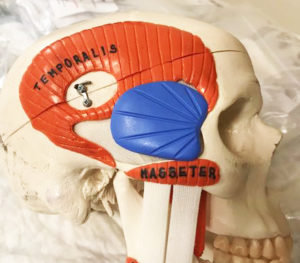Augmentation of the temporal region is a new area for synthetic facial implants. While every other facial implant designed is for bony augmentation, temporal implants provide enhancement of the soft tissue (muscle) region of the side of the forehead and eye. While injectable filler and fat provide a less invasive approach, they do not offer the capability of producing a one-time permanent solution to temporal hollowing.

The subfascial plane for a temporal implant is an easy one to surgically approach. And introducing the implant is equally easy. But one question that often comes up is what is to keep the implant from sliding down along the temporalis muscle, below the zygomatic arch and into the lower face? Not only has it never occurred but there are multiple anatomic reasons as to why that can not happen.

The second bony reason is the location of the coronoid process of the mandible. The tip of the coronoid process acts as an inferior stop as it juts upward into the subzygomatic arch space. In addition, onto the coronoid process are the funneled attachments of the temporalis muscle which also creates a soft tissue block.
For these anatomic reasons the temporal implant is prohibited from falling downward into an unintended anatomic location. The surgeon should feel comfortable making a pocket that is felt to be best for implant placement without this concern.
Dr. Barry Eppley
Indianapolis, Indiana


